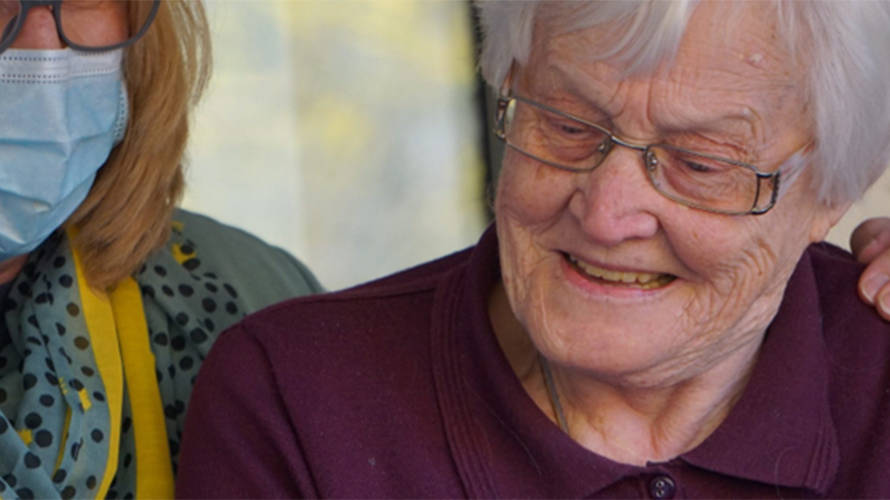Jennifer wakes up at 5:30 a.m. every day. Not for an early yoga class or some meditative morning routine but to make sure her mother remembers to take her heart medication before the day’s chaos begins. By 7 a.m., she’s packing lunches for her two teenagers while squeezing in a quick phone call to her mother’s pharmacist to sort out an insurance issue. The rest of her day is a blur of work meetings, soccer practices, and helping her mom navigate Medicare forms.
She calls it “a delicate juggling act.” But some days, Jennifer admits, it feels more like a slow unraveling.
Jennifer isn’t alone. She’s part of the growing sandwich generation—those caring for both aging parents and children. It’s a role full of love and meaning but also one that leaves many adults teetering on the edge of burnout.
The Heavy Weight of Care
The sandwich generation has been swelling in size as life expectancy rises and young adults take longer to achieve financial independence. Today, more than 12 million Americans are juggling these dual responsibilities, according to Pew Research Center. And as any caregiver will tell you, it’s not just about logistics or financial strain—it’s emotional.
For every moment of tenderness, like listening to your mom’s childhood stories as you help her sort through old photo albums, there’s a sleepless night spent wondering how you’ll pay for her home health aide while saving for your kid’s college tuition.
And then there’s the exhaustion. It’s not just physical, though caregiving is undeniably tiring. It’s the mental load—keeping track of doctor appointments, grocery lists, and mounting medical bills—that can make you feel like you’re carrying a weight you can’t put down.
Recognizing the Signs of Burnout
Caregiving can creep from manageable to overwhelming in a way that’s almost imperceptible—until you find yourself snapping at your child over a misplaced soccer cleat or crying in the car after a tough phone call with your parent’s insurance company.
The warning signs of burnout include:
- Irritability: Little things that never bothered you now feel insurmountable.
- Exhaustion: Even with a full night’s sleep, you feel bone-tired.
- Physical symptoms: Back pain, headaches, or stomach issues that you can’t explain.
- Detachment: Avoiding social events or hobbies because you simply can’t muster the energy.
Recognizing these signs is the first step toward reclaiming your balance.
Lessons in Letting Go
If there’s one truth about caregiving, it’s this: You can’t do it all, and you don’t have to.
Jennifer, for example, learned to let go of the guilt she felt about hiring a part-time caregiver for her mom. “I thought it made me a bad daughter,” she says. “But what I’ve realized is that having help makes me a better one.”
Here are a few ways to lighten the load:
1. Delegate and Divide
Involve siblings, extended family, or even close friends in caregiving tasks. Jennifer’s brother, for instance, handles their mom’s finances while she focuses on daily care.
2. Embrace Technology
There’s an app for nearly everything these days. From reminders for medication schedules to shared family calendars, technology can be a lifeline.
3. Know When to Outsource
Whether it’s hiring a house cleaner or arranging meal deliveries for your parents, outsourcing tasks doesn’t mean you’re failing. It means you’re prioritizing.
The Emotional Side of Caregiving
It’s impossible to overstate the emotional rollercoaster that comes with caregiving. Some days, Jennifer feels like a hero—holding her family together. Other days, she’s filled with resentment, longing for a break that feels perpetually out of reach.
Experts say acknowledging those feelings is crucial. “Caregiving is an act of love, but it’s also hard work,” says Dr. Karen Fletcher, a geriatric psychologist. “Feelings of frustration or guilt don’t make you a bad caregiver. They make you human.”
Small Ways to Refill Your Cup:
- Celebrate the Wins: Even small victories, like convincing your dad to use his walker, are worth celebrating.
- Carve Out Joy: Whether it’s a five-minute walk or a morning cup of coffee in silence, find tiny ways to reclaim your peace.
- Connect with Others: Join a support group. Hearing others’ stories can remind you that you’re not alone.
When Work and Caregiving Collide
For many in the sandwich generation, caregiving doesn’t pause when the workday starts. Jennifer often fields calls from her mom’s doctor during work meetings. “I feel like I’m constantly apologizing—to my boss, my mom, my kids,” she says.
Finding balance at work requires transparency. Talk to your employer about flexible work arrangements, like telecommuting or adjusted hours. Many companies now offer caregiver support benefits or paid leave for caregiving responsibilities.
If you’re self-employed, create boundaries by blocking caregiving tasks into specific hours. And don’t forget to factor caregiving into your financial planning—explore tax deductions or credits available for caregivers.
Why This Chapter Matters
Despite the challenges, there’s beauty in the caregiving journey. Jennifer describes a recent moment when her teenage son helped his grandmother walk to the car. “It was this small, quiet act of kindness,” she says. “And it reminded me why we do this. We’re showing our kids what it means to care for family.”
Caregiving may stretch you thin, but it also enriches your life in ways you might not see in the moment. The stories shared, the bonds strengthened, the lessons passed down—they’re the threads that weave families together.
Finding Harmony Amid the Chaos
At the end of the day, caregiving isn’t about perfection. It’s about presence. It’s about showing up, even when you’re tired, and finding moments of joy amid the chaos.
So, if you’re part of the sandwich generation, take heart. You’re not alone in the balancing act. And with the right support, strategies, and mindset, you can navigate this chapter with resilience and grace.
Because at its core, caregiving is a profound act of love—and love, even when messy and exhausting, is what holds us all together.

